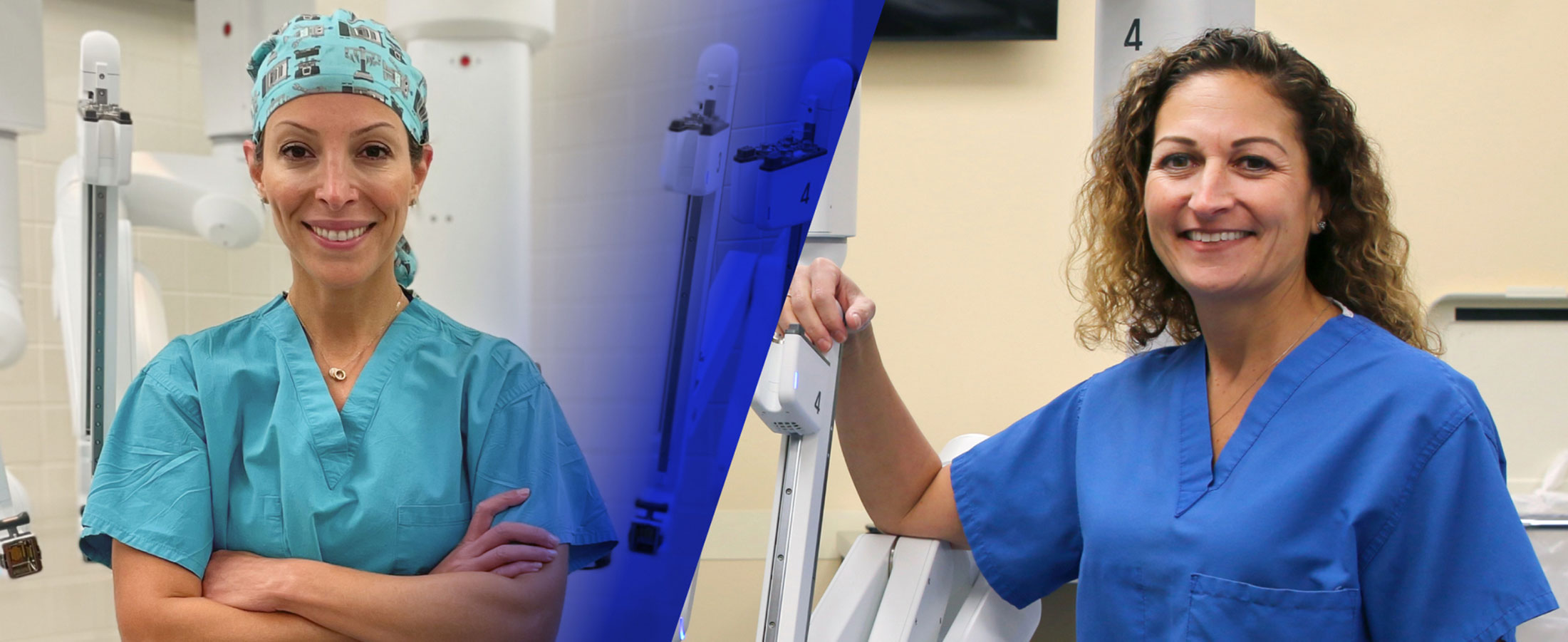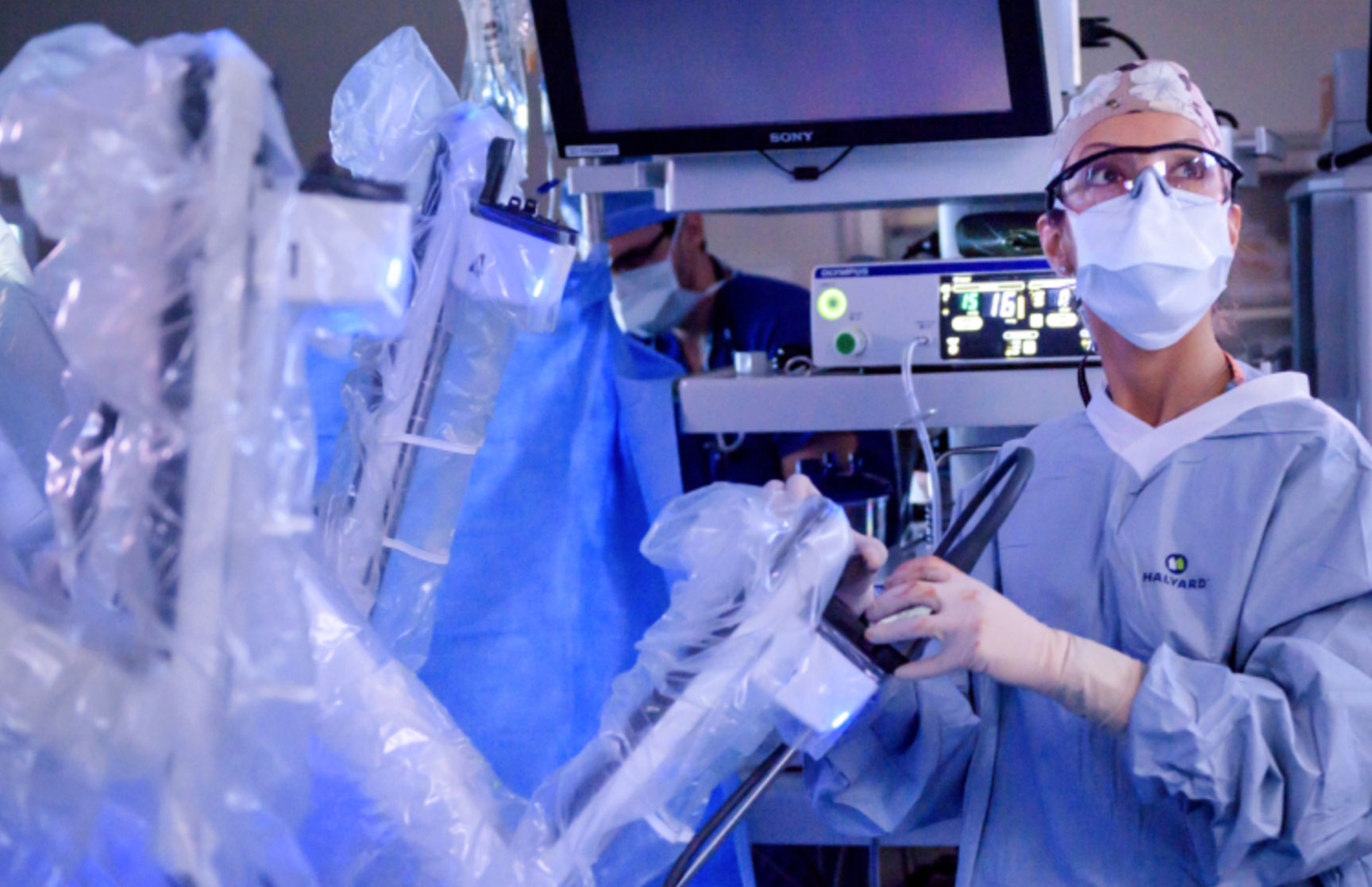

For many in healthcare, there is a belief that while robotic surgery has its place in many specialties, it is not well-suited to the speed and tumult of emergency medicine. According to this view, robotic surgery requires too much setup time, and takes too long, to be widely useful in this context.
But in recent years, a growing group of surgeons have realized that emergency surgery is an area that presents enormous possibilities for robotic surgery. They argue that with proper planning and organization, Intuitive’s da Vinci systems can be the foundation of a successful around-the-clock emergency surgery enterprise, and may help reduce complications, improve patient outcomes compared to open surgery, across a range of common emergency surgical procedures.
“This has worked really well for my practice,” says Dr. Andrea Pakula, a general and acute care surgeon at Adventist Health Hospital in Simi Valley, just outside Los Angeles. “It’s allowed me to expand minimally invasive surgery to the patients that I see through the emergency room.”
Pakula and other surgeons say that this trend is important because it means that more surgical patients can be managed with an approach that may be less invasive, potentially contributing to fewer complications and shorter hospital stays, compared to open surgery.
She was first introduced to robotic surgery in 2016, when the hospital where she then worked purchased a da Vinci system. Until then, she had worked as an open and laparoscopic surgeon. As she began training on the system, she says she saw that it allowed her to perform more complex surgery, often with faster recovery compared to open surgery. Three years ago, she went to Simi Valley in large part because she was excited by their commitment to using a robotic approach in emergency surgery.
Pakula, who is the medical director of robotic surgery at the hospital, performs a wide range of procedures using the system, including complex hernia surgery, bariatric surgery and other emergency general surgery procedures. “We’re now able to do minimally invasive surgery any time of day or night, with the same level of care.”
Some surgeons are reluctant to use a robotic approach in emergency cases because such patients are often sick or have multiple health issues. Pakula says robotic surgery with da Vinci may in some cases help reduce complications and recovery time with these patients, compared to open surgery. “In my experience, many patients can really benefit from this,” she says.
Pakula is not the only surgeon taking this approach to emergency surgery. Dr. Laila Rashidi, a colorectal surgeon at Multicare Hospital in Tacoma, Washington, was already an accomplished da Vinci surgeon. But she had a vision for how to do more for more patients.
She wanted to offer robotic surgery around the clock, seven days a week; she also wanted it to be available to patients in other specialties besides hers. “At the time,” she says, “we had two da Vinci systems, and they were only available from 7:30 a.m. to 3 p.m. So that left a lot of patients out.”
In 2020, she started to do a few of her emergency cases robotically, during normal hours. These cases generated interest among her colleagues. “I had nurses, surgical techs, even surgeons coming into the operating room and watching because they heard that we were doing emergency cases with da Vinci,” she says.
Rashidi analyzed the results of these cases to learn more about what she’d accomplished. In a study published earlier this year 1, she found that for emergency diverticulitis cases, her da Vinci cases had significantly decreased rates of ICU admission and of post-surgical intestinal (anastomotic) leaks compared to open surgery.
She brought this study, as well as other data, to her hospital leaders and proposed setting up a 24/7 robotic surgical enterprise. She argued that expanding the hospital’s robotic program would allow the hospital to do more for more patients. Both she and Pakula say it’s essential to use data as a persuasive tool. “That’s the language they understand,” Rashidi says.
Her OR leadership agreed, and named Rashidi to be robotic chair of the new program. Within nine months, the hospital had six da Vinci systems and around-the-clock robotic availability.
Even so, Rashidi realized that without buy-in from other surgeons, the program wouldn’t succeed. So she set out to convince them. She started with one of her colleagues, an emergency trauma surgeon. One day they were talking in the break room, and Rashidi mentioned that she thought a robotic approach would work well for the kinds of work her colleague typically did, procedures such as bowel perforation and obstruction. Her colleague expressed doubts about the potentially steep learning curve, and the amount of time robotic surgery would add to emergency cases.
Rashidi says this concern is misplaced, and points to her own experience. She says that as she gained experience, her case speed has improved, to the point that her da Vinci cases often take less time than comparable cases she performs with open or laparoscopic approaches.

Rashidi is used to dealing with skepticism. “I get it all the time,” she says. “If you want to make big changes, you need a little bit of a thick skin. It doesn’t work to argue. You have to make your case with results, with data.”
Rashidi’s colleague decided to try da Vinci for her emergency cases, went through the training and found the approach made sense for her. Other emergency surgeons at the hospital heard about her experience. “When the other surgeons saw that, they got interested too,” Rashidi says. “They wanted to get in on it. They went for training, and they actually started teaching each other, assisting each other.”
Currently, nine acute care surgeons at the hospital have received training from Intuitive, with more surgeons due to be trained in the near future. Moreover, Rashidi says, other specialties, including general surgery and urologic surgery, also regularly schedule cases during nights and weekends. “Once you get people to see the value, the program starts running on its own,” she says. “It’s just taken off.” She notes that using da Vinci for emergency surgery also has the potential to increase health equity, since it enables more patients to benefit from its advantages.
Rashidi has always been someone who is willing to do whatever it takes to reach her goals. She was raised in Iran, and as a child decided she wanted to be a doctor. After graduating from the University of Tehran with a degree in engineering, she came to the U.S. with a few hundred dollars and not much English. She applied to medical school, and was accepted to Ross University, which is on the island of Dominica in the Caribbean. Because she had little money and had almost no family in the U.S., she stayed on the island during school breaks.
Over spring break of her first year of medical school, she found herself with nothing to do, and asked a surgery professor if she could observe him at the hospital on the island. The first day, his assistant broke his hand. With no other options, the surgeon asked Rashidi if she wanted to step in. “I loved it, immediately,” she says. “I like working with my hands, and it’s so amazing, how you can have such a big effect on someone's life, so quickly.”
Over the past few years, Rashidi and Pakula have become friends as they work to spread their message. They also share goals for the future.
“We both have the same outlook,” Pakula says. “How we can improve access for other surgeons, especially the ones who are not robotically trained? We want to turn da Vinci into an expected part of acute care surgery, just another option. Not every acute case can be done minimally invasively, but this is a powerful tool that allows us to help our patients more.”
Financial disclosure
The independent healthcare professional quoted on this website has received compensation from Intuitive for consulting and/or educational services. The material presented represents the views, experiences, and opinions of independent surgeons based on their practice and personal experience performing surgery with the da Vinci surgical system. Their experience may or may not be reproducible and is not generalizable.
Important safety information
Serious complications may occur in any surgery, including surgery with a da Vinci system, up to and including death. Examples of serious or life-threatening complications, which may require prolonged and/or unexpected hospitalization and/or reoperation, include but are not limited to, one or more of the following: injury to tissues/organs, bleeding, infection, and internal scarring that can cause long-lasting dysfunction/pain.
Risks specific to minimally invasive surgery, including surgery with a da Vinci system, include but are not limited to, one or more of the following: temporary pain/nerve injury associated with positioning; a longer operative time, the need to convert to an open approach, or the need for additional or larger incision sites. Converting the procedure could result in a longer operative time, a longer time under anesthesia, and could lead to increased complications. Contraindications applicable to the use of conventional endoscopic instruments also apply to the use of all da Vinci instruments.
For important safety information, including surgical risks and considerations, please also refer to www.intuitive.com/safety. For a product’s intended use and/or indications for use, risks, full cautions and warnings, please refer to the associated user manual(s).
Individual outcomes may depend on a number of factors, including but not limited to patient characteristics, disease characteristics, and/or surgeon experience.
Da Vinci Xi/X system
The demonstration of safety and effectiveness for the representative specific procedures did not include evaluation of outcomes related to the treatment of cancer (overall survival, disease-free survival, local recurrence) or treatment of the patient’s underlying disease/condition. Device usage in all surgical procedures should be guided by the clinical judgment of an adequately trained surgeon.
Da Vinci instruments and accessories
It is the responsibility of the owner of the da Vinci surgical system to properly train and supervise its personnel to ensure that the instruments and accessories are properly cleaned, disinfected, and sterilized as required by the user’s manual. Da Vinci products should not be used in a clinical setting unless the institution has verified that these products are properly processed in accordance with the da Vinci system user manual.